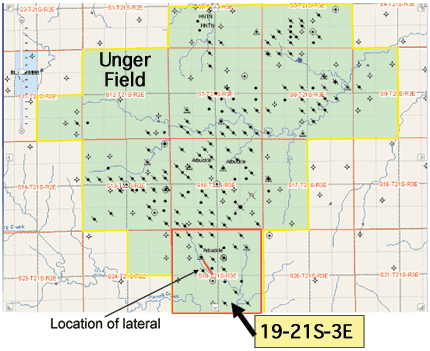Project Info
December 2010
A new horizontal well will be drilled in the Unger field in Marion County, Kansas. The data gathered in the project will be used to evaluate the remaining potential of the Unger field and the use of the drilling technology in other Kansas reservoirs. The lateral will be guided along the crest of a northwest trending anticline located in the southern part of Unger Field using real-time geosteering.
